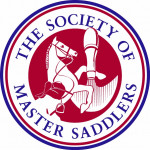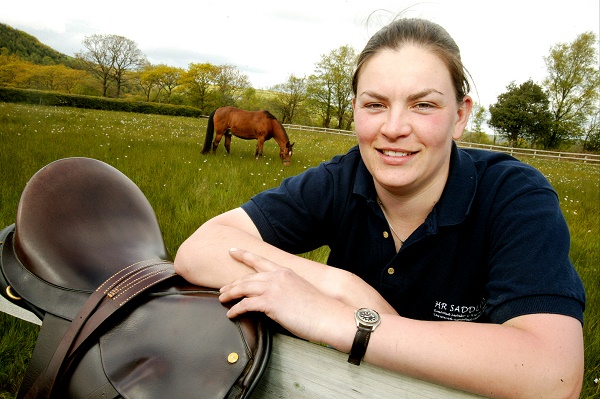Posted: 15th October 2021 | Back to news feed

In this article Society of Master Saddlers’ Master Saddler, Master Bridle Maker, Master Harness Maker, Registered Master Saddle Fitter and Registered Qualified Bridle Fitter, Helen Reader, provides advice on the double bridle.

Although it is preferred, Show Hunters don’t have to be shown in a double bridle. They may wear a pelham or snaffle, so don’t rush to put your horse into a double bridle. If you and the horse have not used a double bridle before then you will need to introduce the double bridle slowly to the horse. First putting the double bridle on and allowing the horse time to feel it, then walking the horse around in hand with the double bridle on before thinking about mounting the horse.
The best way to make sure that the double bridle is fitted correctly and therefore comfortably for your horse is to use an SMS Registered Qualified Bridle Fitter. They will be able to either fit your existing bridle offering advice about any adjustments that may be required or by fitting/measuring for a new double bridle.
The double bridle is fitted in a similar way to a snaffle bridle with the bradoon bit fitted as you would on a snaffle bridle so that it makes a gentle smile on the horse’s lips. The curb bit is then fitted just below this, so that the two bits sit comfortably in the mouth together. The curb bit will be fitted with a curb chain, this must be twisted anticlockwise to remove the twists and allow it to sit smoothly against the chin groove. A lip strap is also fitted to the curb bit and passes through the fly link on the curb chain. This will stop the curb chain raising up above the chin groove and will prevent the curb chain from being lost should it come undone.
A double bridle is always fitted with a cavesson noseband which should sit 2-3 fingers below the facial crest (cheek bone) and with space for 2 fingers at the front on top of the nasal bone. The distance around the front of the noseband should be long enough to allow the nose cheeks to sit behind the facial crest, which will also keep them away from the horse’s eyes. The noseband should be a simple plain cavesson. This is flat strap without any stitching, the width of noseband can vary depending upon the size of the horse’s head. A larger longer face would need a wider noseband, whereas a smaller head would suit a narrower noseband.
The headpiece needs to sit comfortably around the ears. There are many anatomical headpieces available now to accommodate large ears. However these must be fitted carefully to make sure that the curve sits in the correct place for each horse, otherwise it could cause more issues than it solves. The bridle groove (the area between the ears and the atlas) varies from horse to horse and therefore the width of the headpiece needs to be considered, so that a curved headpiece removing pressure from behind the ears doesn’t then cause increased pressure to the atlas. The browband needs to be a sufficient length so that it is not pulling the headpiece forwards, but not so long that is flaps around.
The buckles on both the throatlash and cheekpieces should be level with the horse’s eye. If they are done up just below the browband then they increase pressure on the Temporomandibular Joint (TMJ), which is where the mandible (lower jaw) connects with the maxilla (upper jaw) through the temporal bone of the skull. Discomfort in this area can cause tossing or tilting of the head, stitcking the tongue out, resistance to bridling or a number of performance related issues.
For more information visit www.mastersaddlers.co.uk or contact The Society of Master Saddlers on 01449 711642.
The Equestrian Index newsfeed is compiled from articles submitted by advertising members and expresses the opinions of those members. Watsons Directories Ltd shall not be held liable for any inaccuracies or mis-statements therein.
